Arlec PB12PP (not listed on Arlec's site)
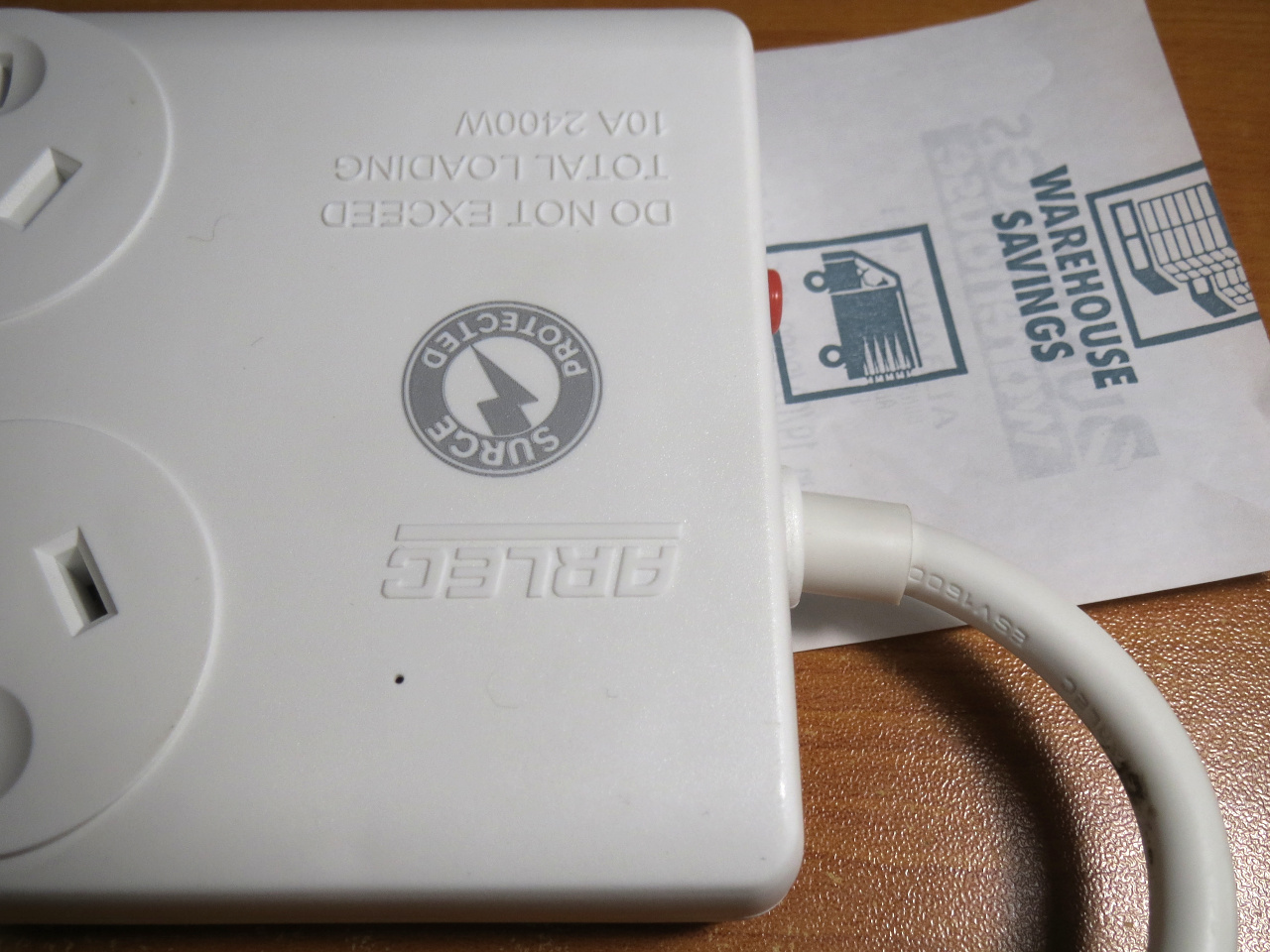
- PB12PP cord end.JPG (374.88 KiB) Viewed 134221 times
This is technically an addendum to my
cheap power-board challenge from two months ago, as this model is a bigger sister to the CLKPB4 and CLKPB6 revision shown there (while branded different, the general design and approval number are shared, the cardboard sleeve is done in the same general style and even gives the same customer service numbers). Although not nearly so cheap, at AU$23.79 it's still quite reasonable for 12 outlets (of which 5 are wide‑spaced for bulky plug‑packs). Unfortunately the local Bunnings has run out of the decent CLKPB6 and replaced it with an inferior version (containing ordinary low-life contacts), with the CLKPB4 undoubtedly next to go; but this model remains.
The seven normal sockets are at the usual 45mm intervals, with the five wide sockets at 65mm intervals (so the mid-row sockets are horizontally 5mm apart, and 10mm at the incoming end). Unlike the 4 and 6 outlet models, there's a sleeve at the cord entrance and a surge suppressor as standard equipment.
Strangely, mounting points are absent from the back of this model (the CLKPB4/6 do have them), as a few customer reviews (on
Bunnings' page) note.
It's held together with no less than 15 screws. I've also seen an 8 (5+3) outlet + 2 USB variant in Bunnings.
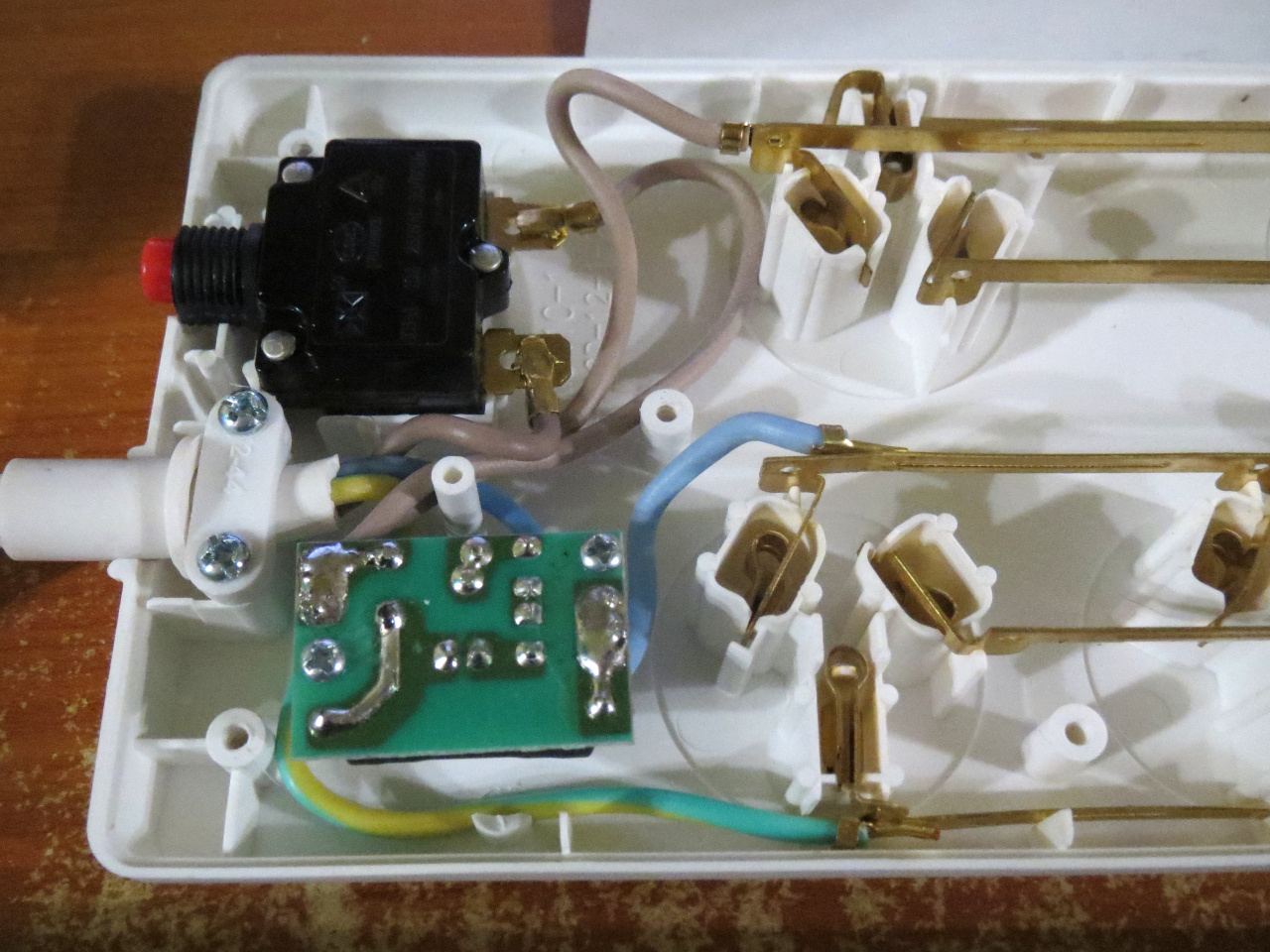
- PPB12PP inside.JPG (462.53 KiB) Viewed 134221 times
Unlike in the CLKPB4/6, the breaker connections actually are welded in this one (although both A+N go through soldering on the surge suppressor anyway).
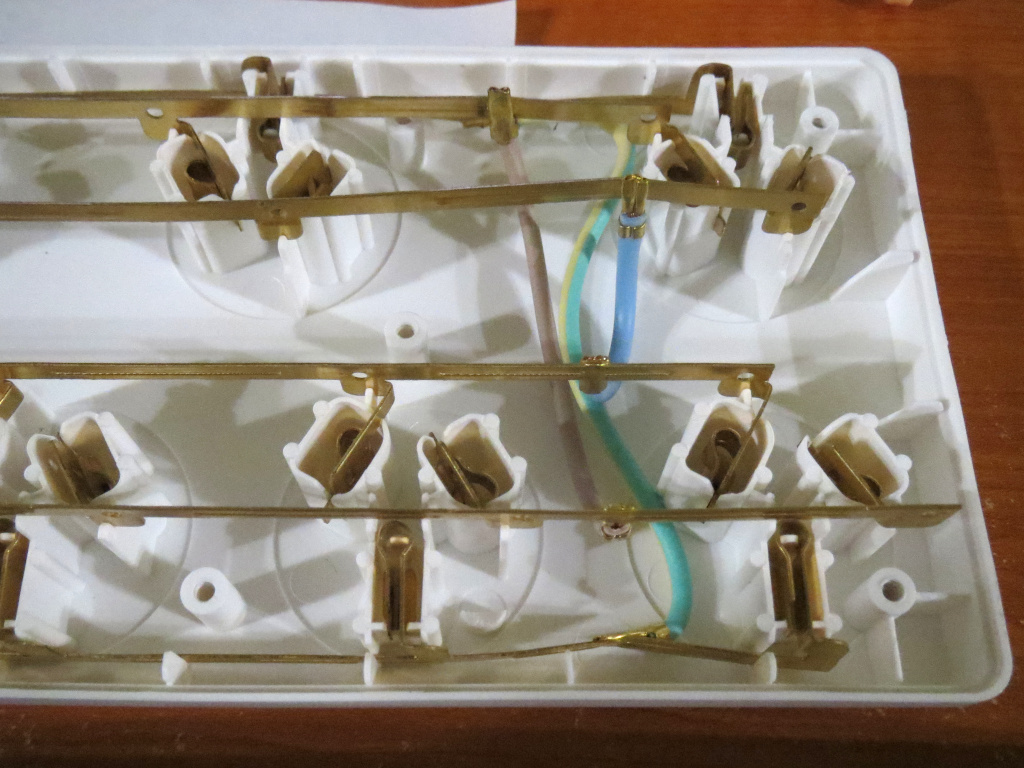
- PB12PP inside far end.JPG (300.22 KiB) Viewed 134221 times
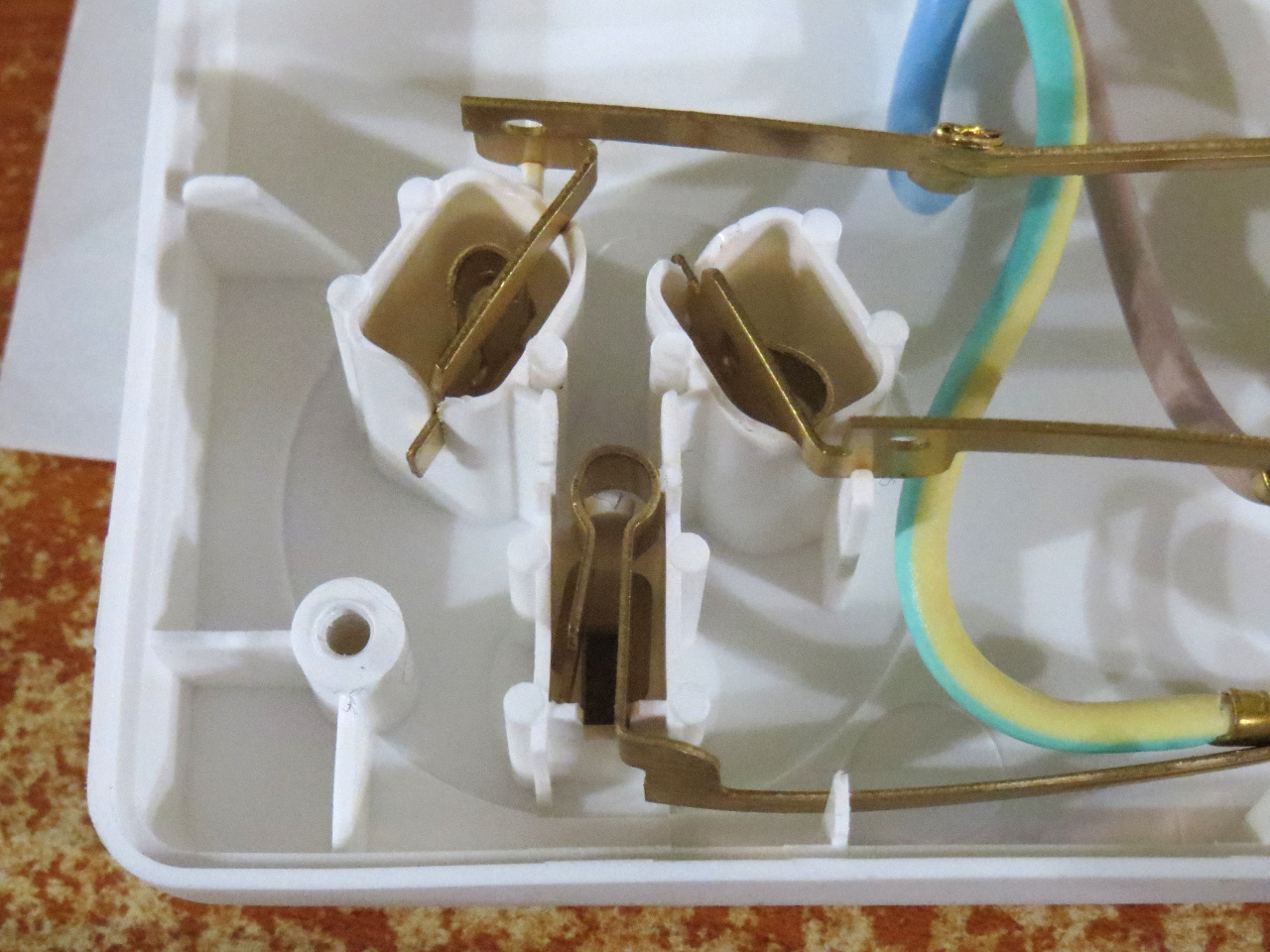
- Jammed contact.JPG (448.01 KiB) Viewed 134221 times
One earth contact was half-stuck, but it still made
some contact with the pin; the same socket's neutral contact was somewhat mis-seated (the bar wasn't aligned in its proper guide slot, instead being pressed in hard enough to dig another slot), but both defects were easy enough for me to fix.
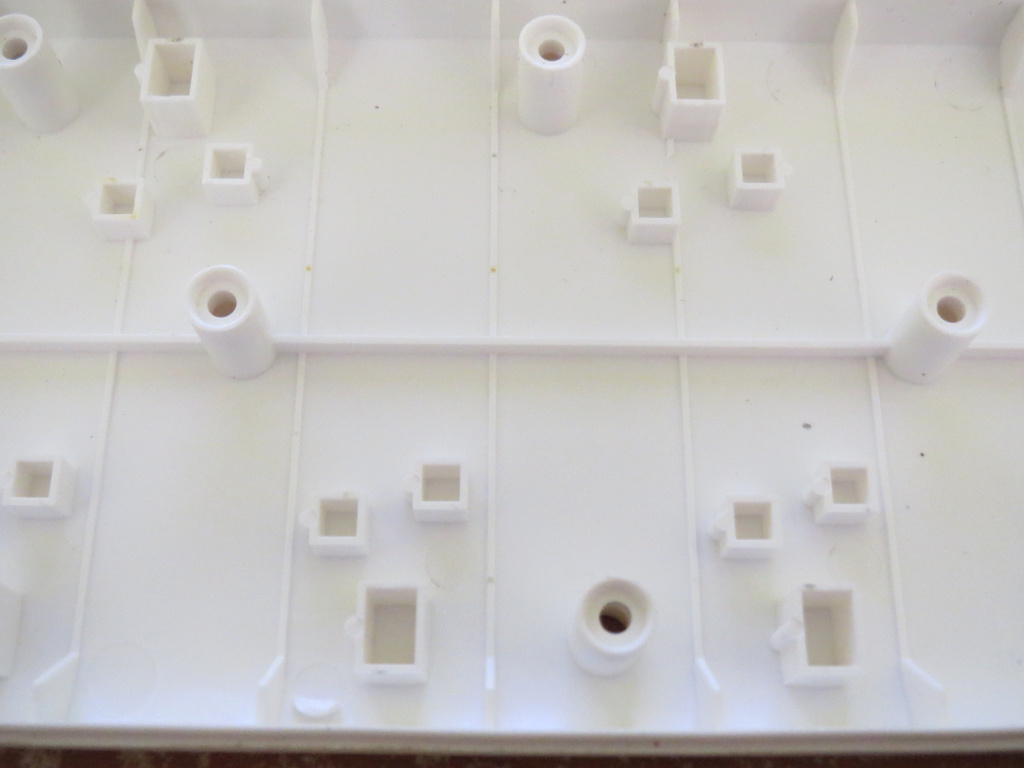
- PB12PP contact standoffs.JPG (168.72 KiB) Viewed 134221 times
The contact supports are actually box sections rather than the “L” pieces in CLKPB4/6, and the breaker reset button isn't awkwardly recessed inside.
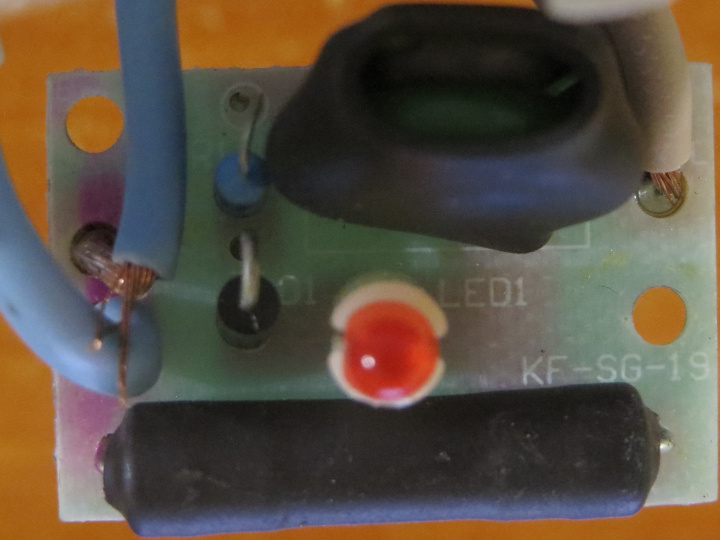
- KF-SG-19.JPG (124.42 KiB) Viewed 134221 times
The surge suppressor is reasonably well thought-out (for an MOV one), with both thermal and overcurrent fuses like in the
Crest models (although the load stays on, so in a surge severe enough to blow the fuse, it won't save your devices). The red LED is fed half-wave through a 200kΩ ±1% metal film resistor, which may be 0.25W or 0.5W based on its size; either rating is quite sufficient (144mW typical at 240V, 176mW maximum at 264V and −1% tolerance), and the epoxy-fiberglass PCB will be fairly heat-resistant (they're usually rated to 130°C, and my calculations suggest 100°C worst-case in a 40°C ambient).
The incoming neutral wasn't fully inserted and had 4 stray strands (by my count), but it should still survive the load test.
Speaking of which…
Crest PW4PBS10
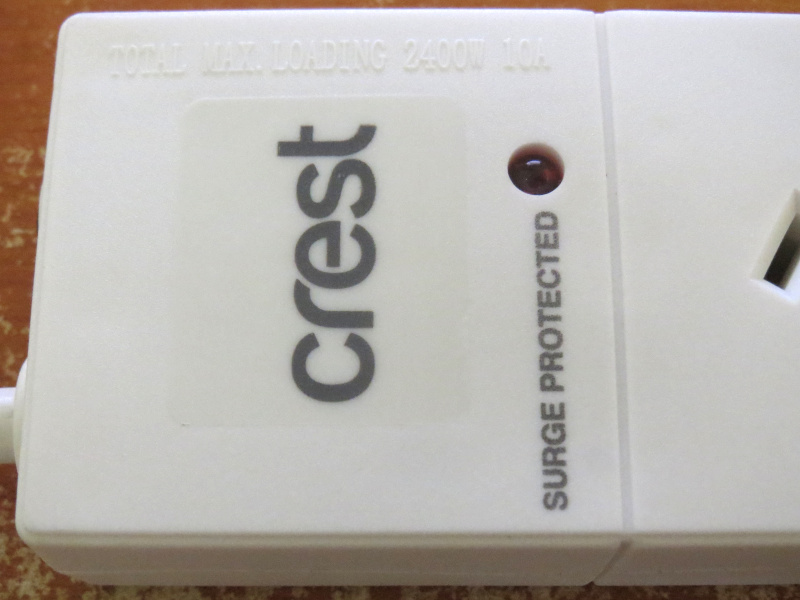
- PW4PBS10 front end.JPG (129.06 KiB) Viewed 134221 times
This model seems to be a replacement for the
PWA04984; observing the full-wiper contacts and general similarity to the
KF‑MSD‑4A, I spent the AU$19.50 at Woolworths today (although Crest put it at AU$16, versus AU$20 for the PWA04984). Will it buck the trend of reduced quality in replacement products?
Unlike Handy Hardware's packaging claim for my KF‑MSD‑4A, the stated 1m length is correct here; and it's more flexible than the PWA04984/5's Conghao cord.
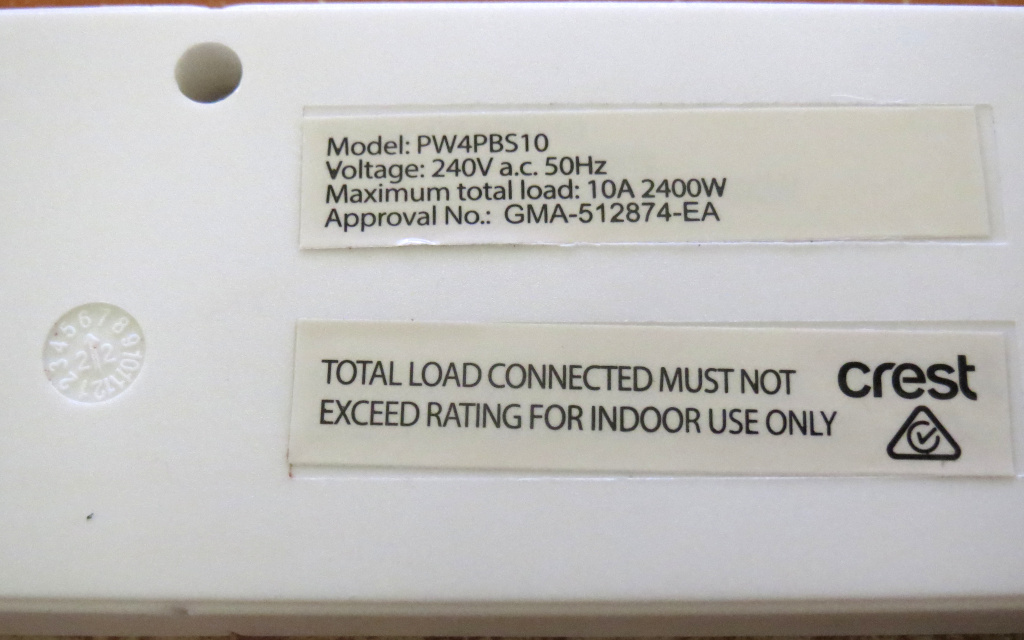
- PW4PBS10 back.JPG (193.71 KiB) Viewed 134221 times
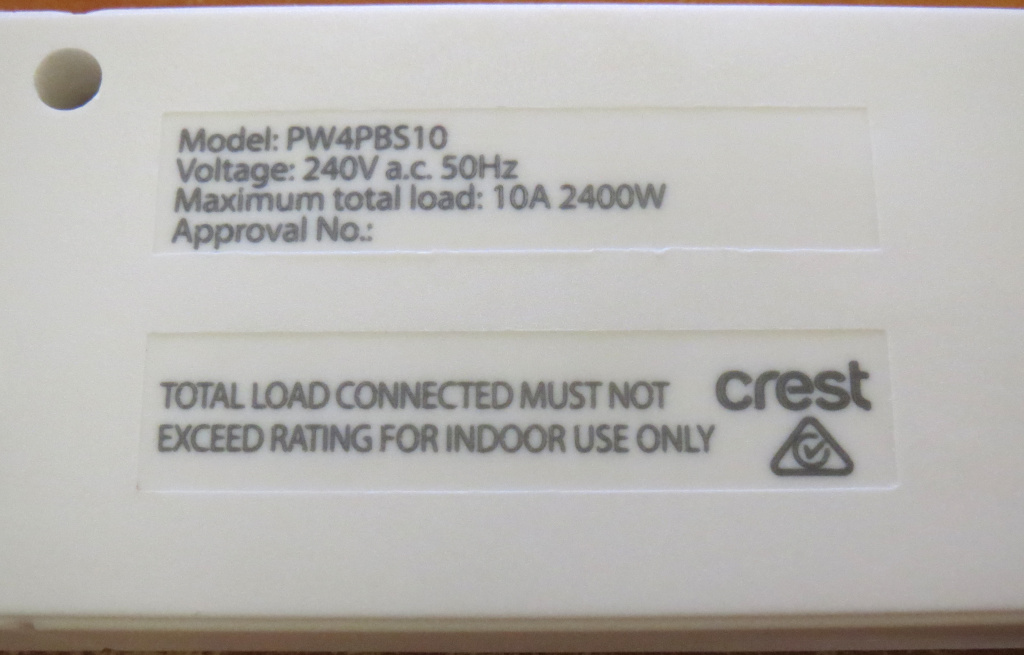
- Maybe they'll add the approval number here later.
- Labels removed.JPG (170.86 KiB) Viewed 134221 times
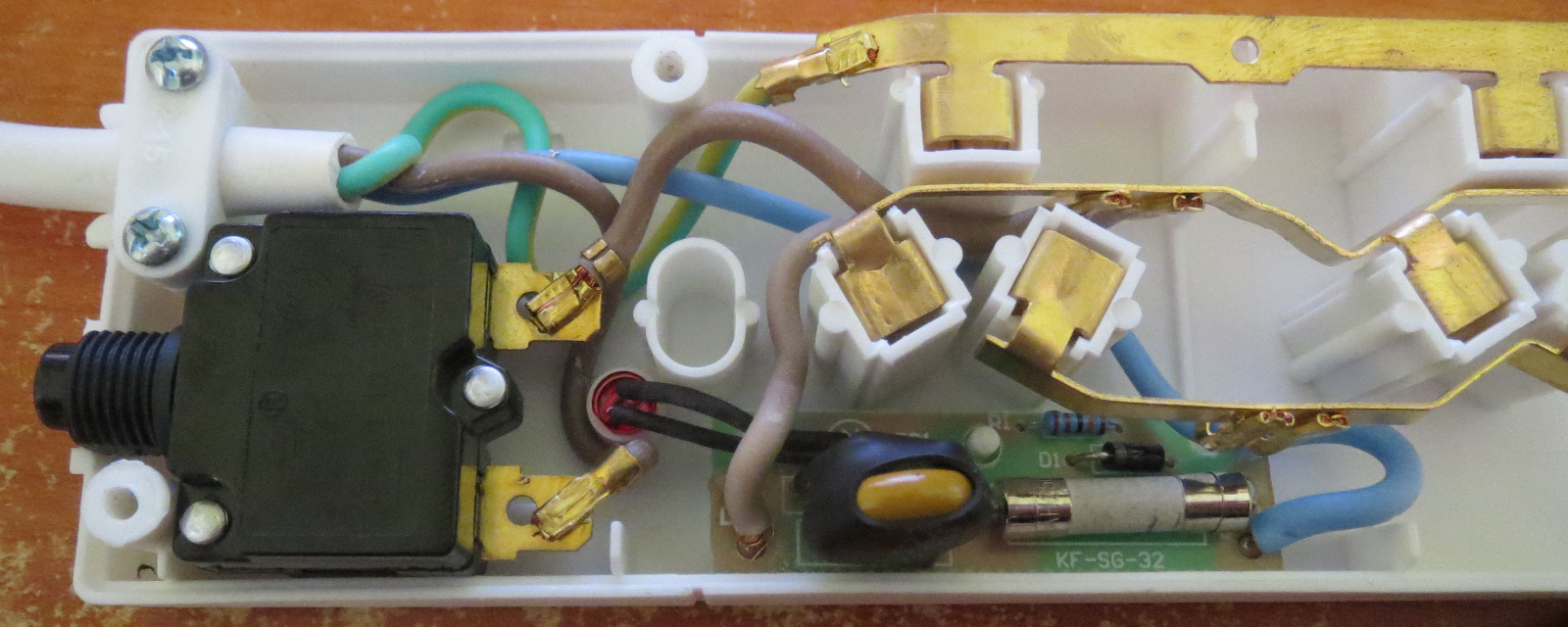
- PW4PBS10 inside.JPG (395.24 KiB) Viewed 134221 times
For some reason, it's held together with only 5 screws (versus 7 on the KF‑MSD‑4A), so twists a bit more; unlike the CLKPB4/6 and PB12PP, the native Kaifeng branding is present on its plug and cord. Inside, it's reasonably similar, with marginally narrower busbars (3.8mm neutral and 4.4mm earth) but the same thicknesses (0.6mm A+N, 0.5mm E), and a cord-clamp bar instead of casing-integral ridges.
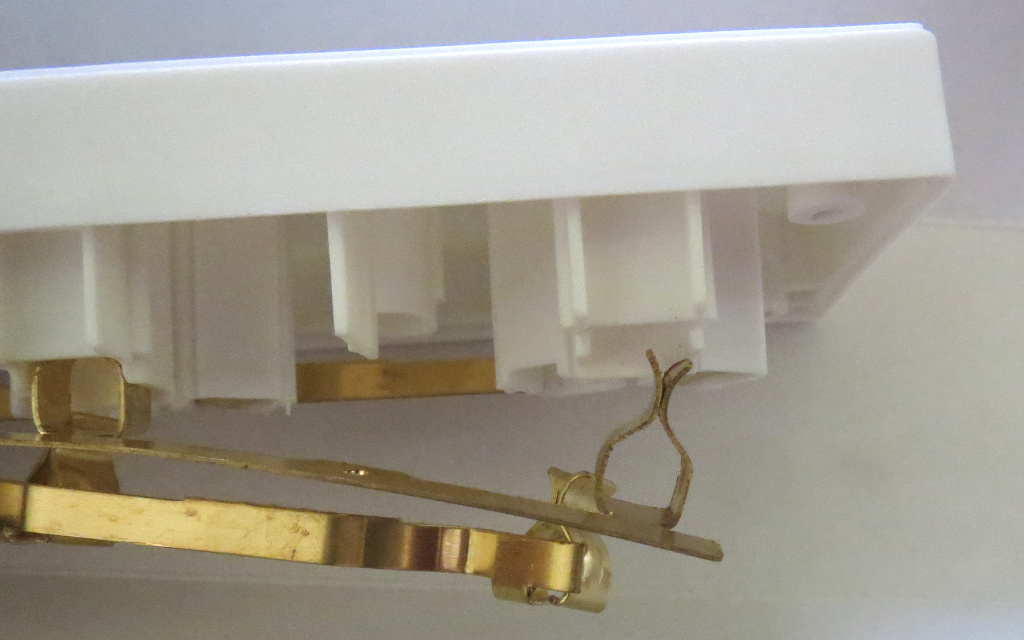
- PW4PBS10 contacts out.JPG (202.79 KiB) Viewed 134221 times
The earth contacts have different geometry from the KF‑MSD‑4A, but are still about 2mm taller than the active and neutral parts (for extra safety).
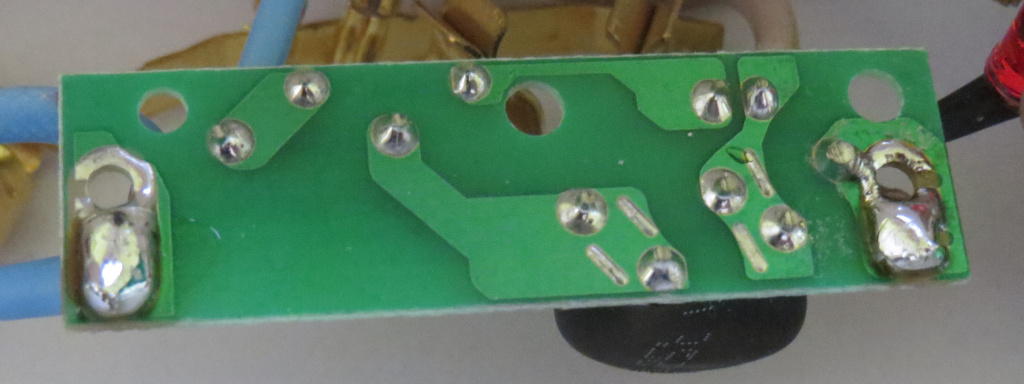
- KF-SG-32 solder side.JPG (139.33 KiB) Viewed 134221 times
The surge suppressor has a different PCB layout, but the same circuit as in the PB12PP (except that the LED resistor is 220kΩ).
This time the overcurrent fuse has no heatshrink sleeve, so I can see that it's T6.3AH 250V. (Which is perhaps better than the PWA04984/5's F3.15A.)
There's
one stray strand on the active wire, but that's no big deal.
Load testingSince incoming active in the PB12PP goes to the 5 wide sockets (with incoming neutral and earth to the 7 narrow sockets), I've made an even scarier shorting lead:
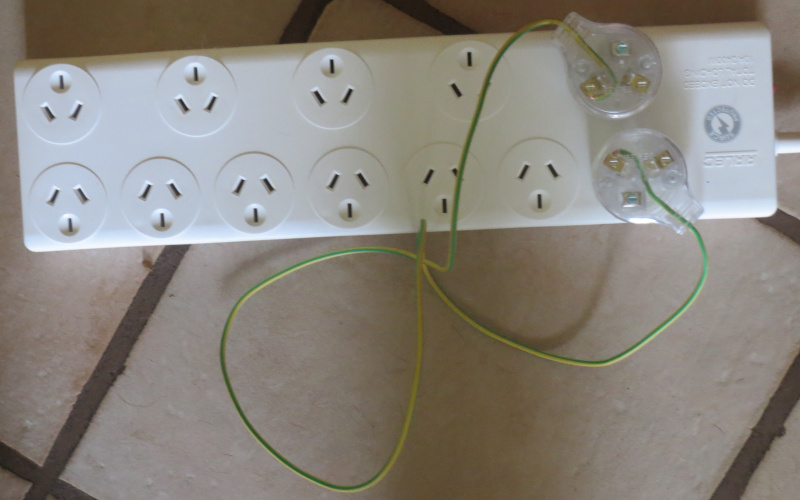
- Don't worry, I disbanded it after the test
- Dangerous test lead.JPG (125.47 KiB) Viewed 134221 times
Overloaded to 20A, the two boards tripped in 12 and 13 seconds respectively; at 25A, 6 seconds each; and at 30A, 4 seconds each.
I did the sustained load test (11A) for both boards (plus two spares while I'm at it

) in series to save time; no trip in well over an hour.
ConclusionsThe PB12PP cuts fewer design corners than in the
CLKPB4/6, but my unit had a few more QC niggles so gets a C− again (if the quality control was remedied, it could get a C+). While you can buy more-expensive models, I'm not so sure you can get
better; so it's still decent value overall.
The surge suppressor also gets a C− from me (C+ being the highest grade I'll give to an MOV suppressor, given a 20mm+ MOV and fireproofing).
Although the PW4PBS10 superficially looks worse than the PWA04984, its socket contacts are actually an upgrade and surge suppression remains equally decent (another C−). It isn't
quite as well-made as the plain
KF‑MSD‑4A, but the contacts are still up to par so it earns an overall C.
The only real losses are the cord length (arguably compensated by its better flexibility), and that one wide-spaced socket on the PWA04984/5.
(And a less-efficient indicator, but that's rather trivial.)


 ; but it seems to be made of polypropylene (not POM which is vulnerable to chlorine) so hopefully will survive anyway. The screws are zinc-plated steel which doesn't seem ideal, but stainless-steel is also reportedly prone to chlorine attack (I've seen rusty bolts and nuts supposedly of 316 in the pool changing rooms) so I'm not sure if it
; but it seems to be made of polypropylene (not POM which is vulnerable to chlorine) so hopefully will survive anyway. The screws are zinc-plated steel which doesn't seem ideal, but stainless-steel is also reportedly prone to chlorine attack (I've seen rusty bolts and nuts supposedly of 316 in the pool changing rooms) so I'm not sure if it  )
) ), but as is it's only so-so value for money.
), but as is it's only so-so value for money.

 ); two C13 cords of 38–40cm long (originally included with external PSUs for HP inkjet printers, I have a similar-length C7 from a different model), ideal* for using the rice cooker in my unit kitchen corner; an old PALA cord (93cm long) with the best-made C13 end I've seen (hard plastic body, full wiper contacts); two C1 cords (a leftover from the era of mains shavers), the obsolete Australian appliance couplers (7.5A, reversible A/N, earth spring clips) among others; and a few counterfeits (two C13, one C7) to blow up
); two C13 cords of 38–40cm long (originally included with external PSUs for HP inkjet printers, I have a similar-length C7 from a different model), ideal* for using the rice cooker in my unit kitchen corner; an old PALA cord (93cm long) with the best-made C13 end I've seen (hard plastic body, full wiper contacts); two C1 cords (a leftover from the era of mains shavers), the obsolete Australian appliance couplers (7.5A, reversible A/N, earth spring clips) among others; and a few counterfeits (two C13, one C7) to blow up 
 (and a
(and a